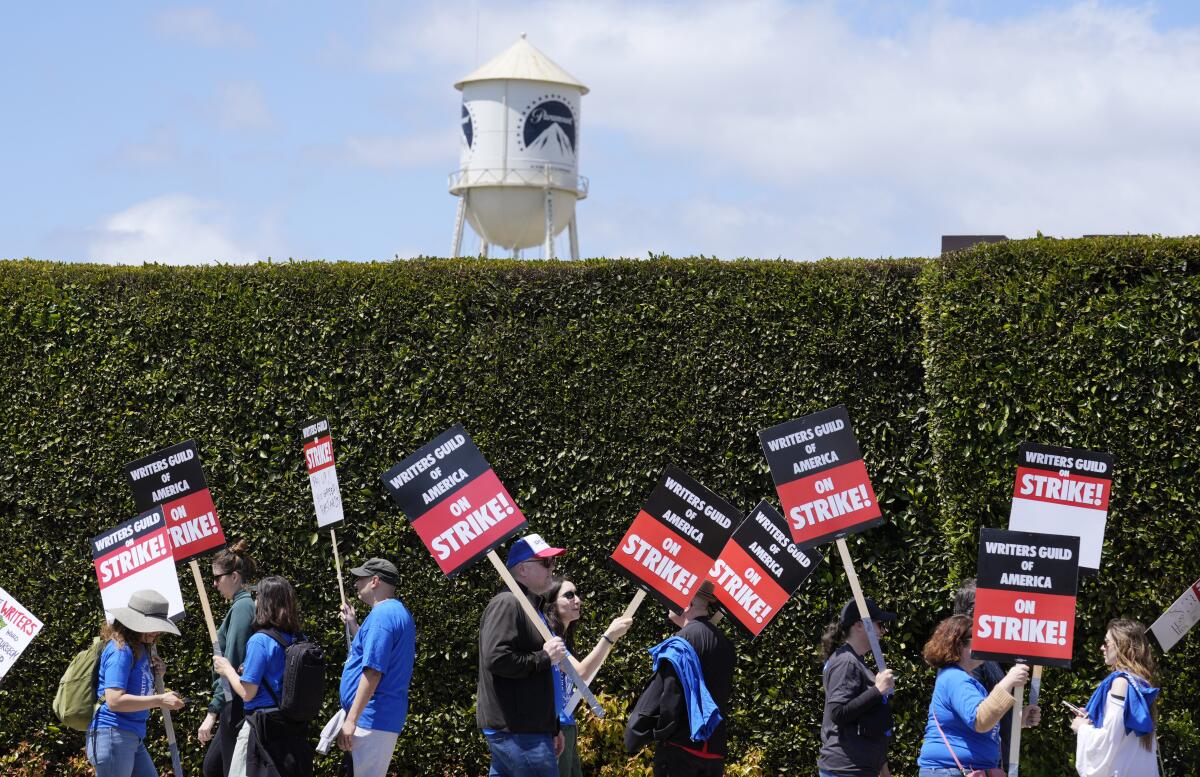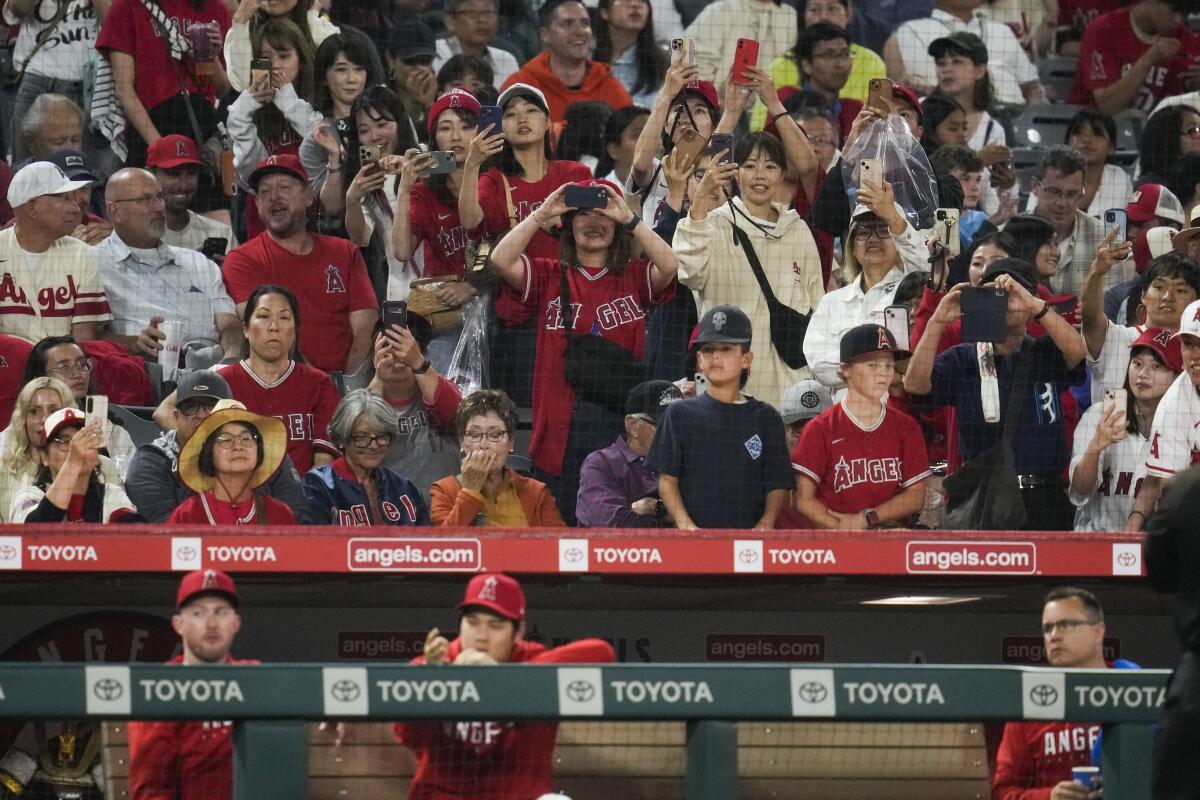What could reparations look like in California? Cash payments get the spotlight — and opposition

- Share via
Good morning. It’s Monday, Sept. 25. Here’s what you need to know to start your day.
- Survey finds wide opposition to cash reparations
- WGA and major Hollywood studios reach tentative deal
- Lung disease is killing California stone workers
- And here’s today’s e-newspaper
Sign up for Essential California
The most important California stories and recommendations in your inbox every morning.
You may occasionally receive promotional content from the Los Angeles Times.
Cash payments get the spotlight — and the opposition
California lawmakers have some decisions to make regarding if — and how — the state government will respond to an ambitious effort to create a reparations program for Black residents.
One part of the multilayered recommendations put forth by the California Reparations Task Force has been the focus of much attention and debate: cash payments for the descendants of enslaved African Americans living in California. But many Californians are opposed to the idea.
A recent UC Berkeley poll co-sponsored by The Times found 59% of voters were against cash payments, while 28% support the idea. The divide was sharp among ethnic groups in the state — more than 75% of Black voters surveyed expressed some degree of support, while 65% of white voters voiced some degree of opposition. Nearly 60% of Latino voters and Asian-Pacific voters also opposed cash payments.
The task force presented its 1,080-page report to the state in late June, outlining the historical harms of slavery and its “lingering effects on American society today,” along with recommendations aimed at “enacting meaningful reparations.”
In the survey, many voters agreed that slavery still affects Black residents today. More than half of those polled said the state is either not doing enough, or barely enough, to give Black Californians a fair chance of succeeding.
“The task force’s recommended remedies go far beyond cash payments,” Times reporters Laura J. Nelson and Anabel Sosa wrote, “including proposed reforms to the criminal justice system such as ending cash bail, repealing the ‘three-strikes’ law and paying fair market wages to incarcerated people who work in jails and prisons.”
But the cash payments have drawn heavy media attention and criticism. Six in 10 voters surveyed said it would be unfair for today’s taxpayers to pay for historical wrongs. A majority of those polled also said it was unfair for other oppressed racial and religious groups to be excluded.
I spoke with task force Chair Kamilah Moore last December as the task force was working to finalize its report. She told me that the concept of reparations “is very misunderstood.”
“When you talk to actual African Americans [and ask]: ‘What would you do with reparations?’ They’ll say: ‘I’ll start a business, I’ll help my family,’” Moore said. “That’s what the narrative should be.”
When California joined the Union in 1850, it was a free state on paper. But the task force’s report unpacks the history of how slavery existed in the state despite that “free” label — along with California’s fugitive slave law, which permitted people to capture and reenslave people who had escaped from elsewhere.
And the legacy of slavery in California wasn’t exclusive to African Americans, as historian Jean Pfaelzer detailed in her recent book “California, A Slave State.” In it, she sheds light on the state’s neglected history, in which Chinese immigrants and the region’s Indigenous residents were also enslaved and forced to work, a trend exacerbated by the Gold Rush.
So what happens now?
Moore told Laura and Anabel that she hopes a state bill recommending cash payments will be filed in next year’s legislative session to allow for a robust democratic debate.
And with dozens of other recommendations, including changes to state policies and creating a new bureaucracy to manage the reparations process in the state, we might see more movement on this in 2024. But the reception to cash payments could change the political calculus for Newsom and other elected leaders in California as they seek to provide a national model for reparations.
“Often, people will be in favor of the principle but not the policy,” Ange-Marie Hancock, executive director of the Kirwan Institute for the Study of Race and Ethnicity at Ohio State University, told Laura and Anabel. “When you get to the question of what the government should do about it, that’s when the rubber hits the road.”
Today’s top stories

Hollywood strikes
- The Writers Guild of America and the major Hollywood studios reached a tentative deal that would end a strike that has lasted more than 140 days, tossed thousands of people out of work and exposed deep anxiety over changes brought by technology, sources said Sunday.
- Although they aren’t on strike themselves, crew members have been among the hardest hit by shutdowns caused by the twin strikes: “We’re the collateral damage.”
Health
- Amid the booming popularity of engineered stone, California workers who cut countertops are dying of an incurable disease.
- Tens of thousands of Kaiser Permanente employees in California and elsewhere plan to go on strike in early October after the healthcare giant and unions that represent a huge swath of the Kaiser workforce failed to reach an agreement last week.
Legislative updates
- All California schools will be required to provide gender-neutral bathrooms under a law signed by Gov. Gavin Newsom on Saturday.
- Newsom also declined to sign a bill that would have required human safety drivers in heavy-duty robot trucks for at least the next five years.
More big stories
- A federal judge for the second time overturned California’s ban on large-capacity ammunition magazines, ruling Friday that it lacked a historical basis and is therefore unconstitutional.
- The extended tax-filing deadline for Californians affected by last winter’s storms is fast approaching.
- The Los Angeles Police Department is investigating the midnight heist of a $1.5-million Buddha statue.
- A group of 45 migrants who reached Los Angeles on Friday morning were the second to arrive by bus from Texas in four days.
Get unlimited access to the Los Angeles Times. Subscribe here.
Commentary and opinions
- Abcarian: Advice for the suicidal from a philosopher who tried to kill himself 10 times.
- Opinion: Google has been force-feeding us ads. Now one big antitrust case could change the internet forever.
- Opinion: On the climate crisis, it’s time to lean into pessimism.
Today’s great reads

‘They’re even down there when he’s not.’ Shohei Ohtani fans remain rabid amid uncertainty. For fans of all stripes, it’s a strange time as the Angels wind down the regular season and their hero is shut down due to injury with free agency looming. One thing that remains unshakable? Their love of the Angels’ two-way player.
Other great reads
- Reneé Rapp is remaking young female stardom. But can she enjoy it?
- This L.A. freeway is the butt of many jokes. Can it have new life as parks and housing?
How can we make this newsletter more useful? Send comments to essentialcalifornia@latimes.com.
For your downtime

Going out
- 🍣🥾 How to have the best Sunday in L.A., according to “Survivor” host and executive producer Jeff Probst.
- ⛺ A Channel Islands camping trip could be just what you need to disconnect and refresh.
Staying in
- 📺 A Greek king tries to modernize amid a dysfunctional family of gods and monsters in Fox’s “Krapopolis.”
- 🏈 Start planning your Super Bowl party: Usher will perform the 2024 halftime show.
- 🥘 It’s comfort cooking season. Start with this sheet tart, a giant grape toaster pastry that can do breakfast or dessert.
- ✏️ Get our free daily crossword puzzle, sudoku, word search and arcade games.
And finally ... a great photo
Show us your favorite place in California! Send us photos you have taken of spots in California that are special — natural or human-made — and tell us why they’re important to you.

Today’s great photo is from Kathy Smith of Goodyear, Ariz.: Kelso Dunes in the Mojave National Preserve. Kathy writes: “This picture was taken at the entrance to the Kelso Sand Dunes. We were there in the late afternoon on a fall day when the natural light is magical. The contours of the dunes reveal themselves beautifully.”
Have a great day, from the Essential California team
Ryan Fonseca, reporter
Laura Blasey, assistant editor
Check our top stories, topics and the latest articles on latimes.com.
Sign up for Essential California
The most important California stories and recommendations in your inbox every morning.
You may occasionally receive promotional content from the Los Angeles Times.







